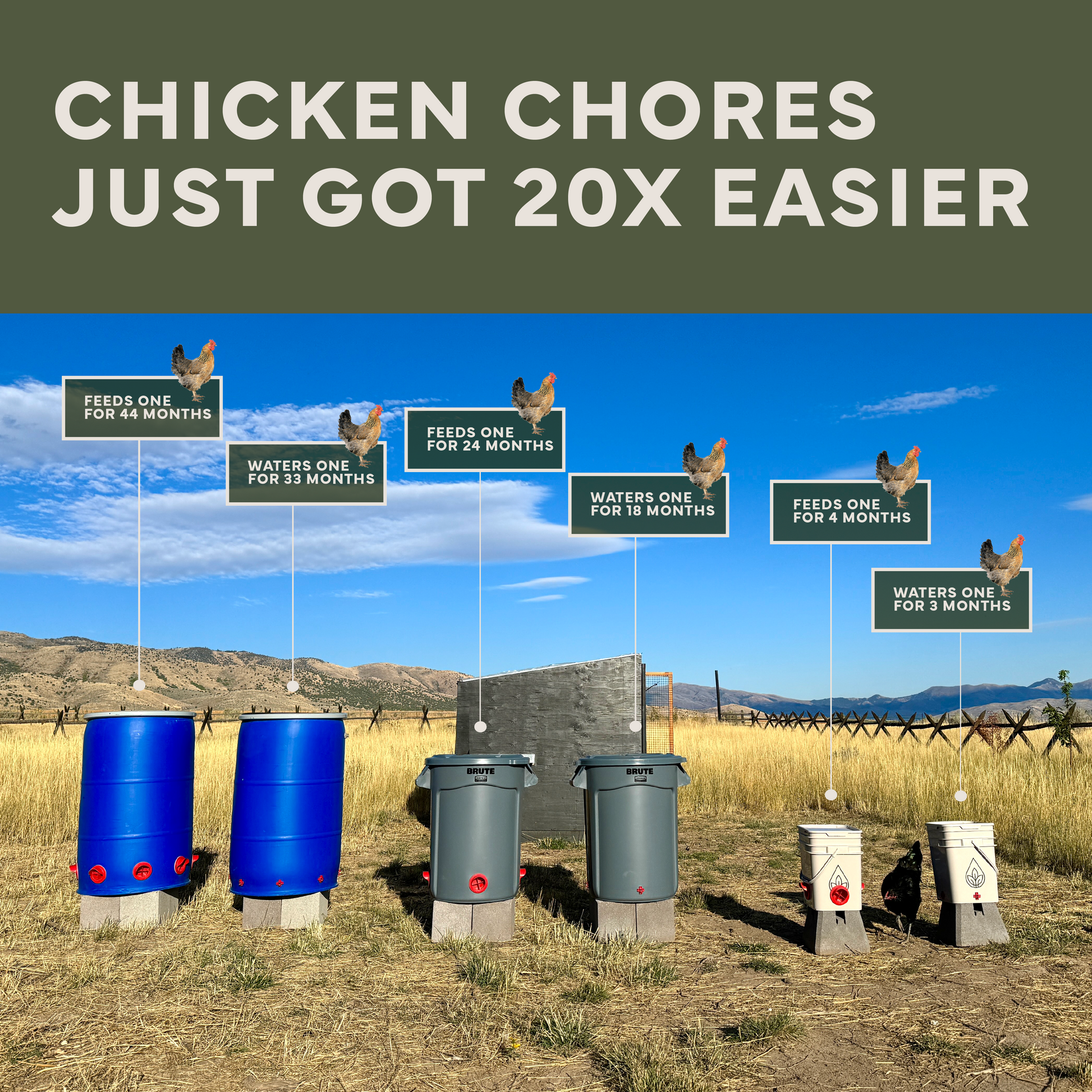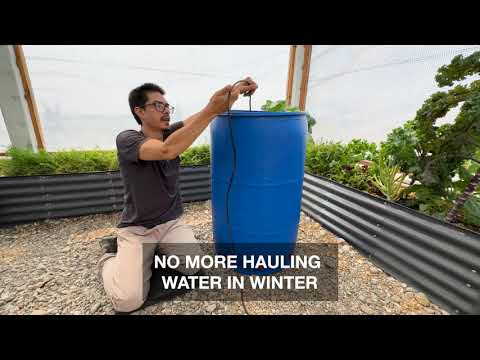CLEARANCE SALE: GET 20% OFF + FREE SHIPPING (save $25+) ON ALL DIY CHICKEN KITS | EXPIRES SOON
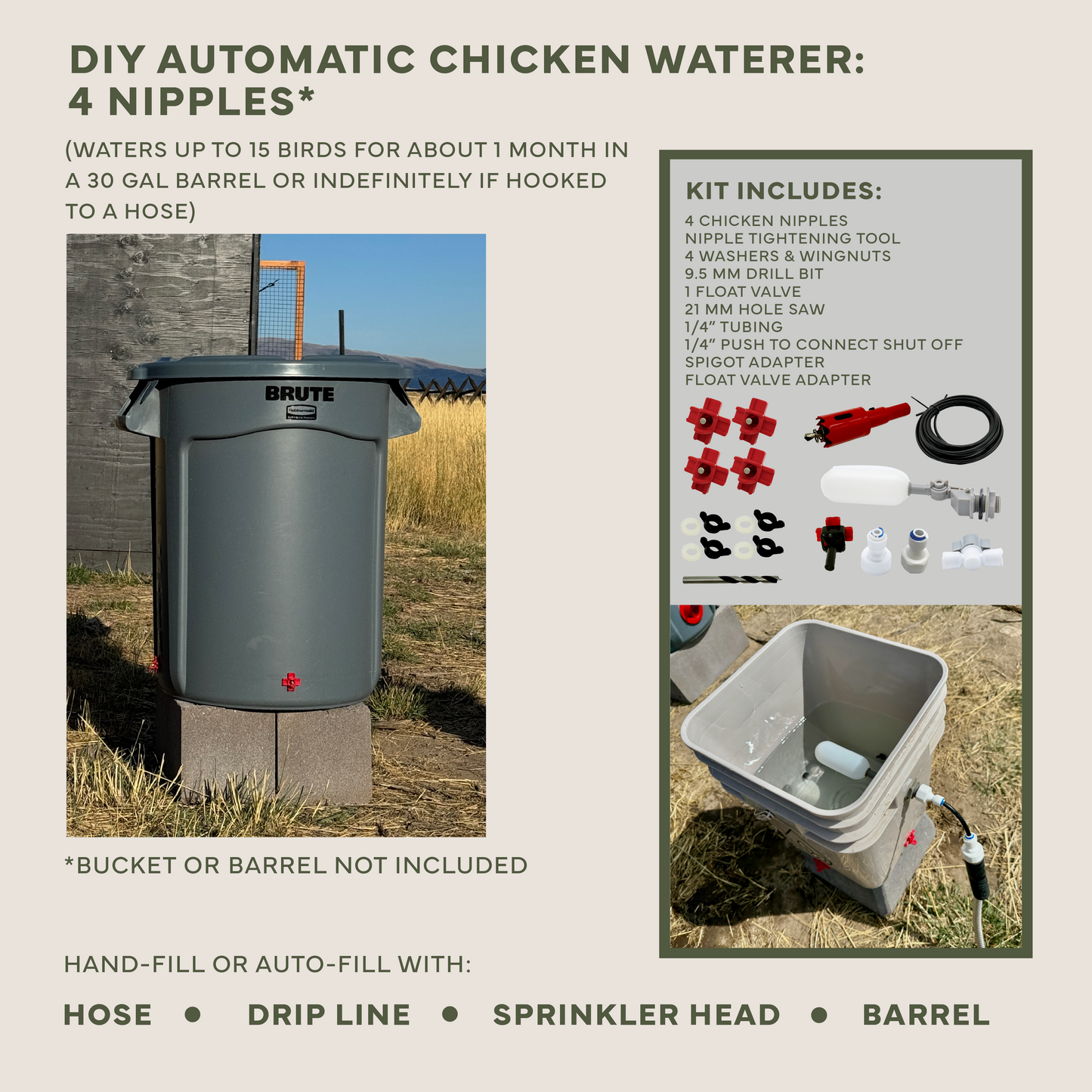
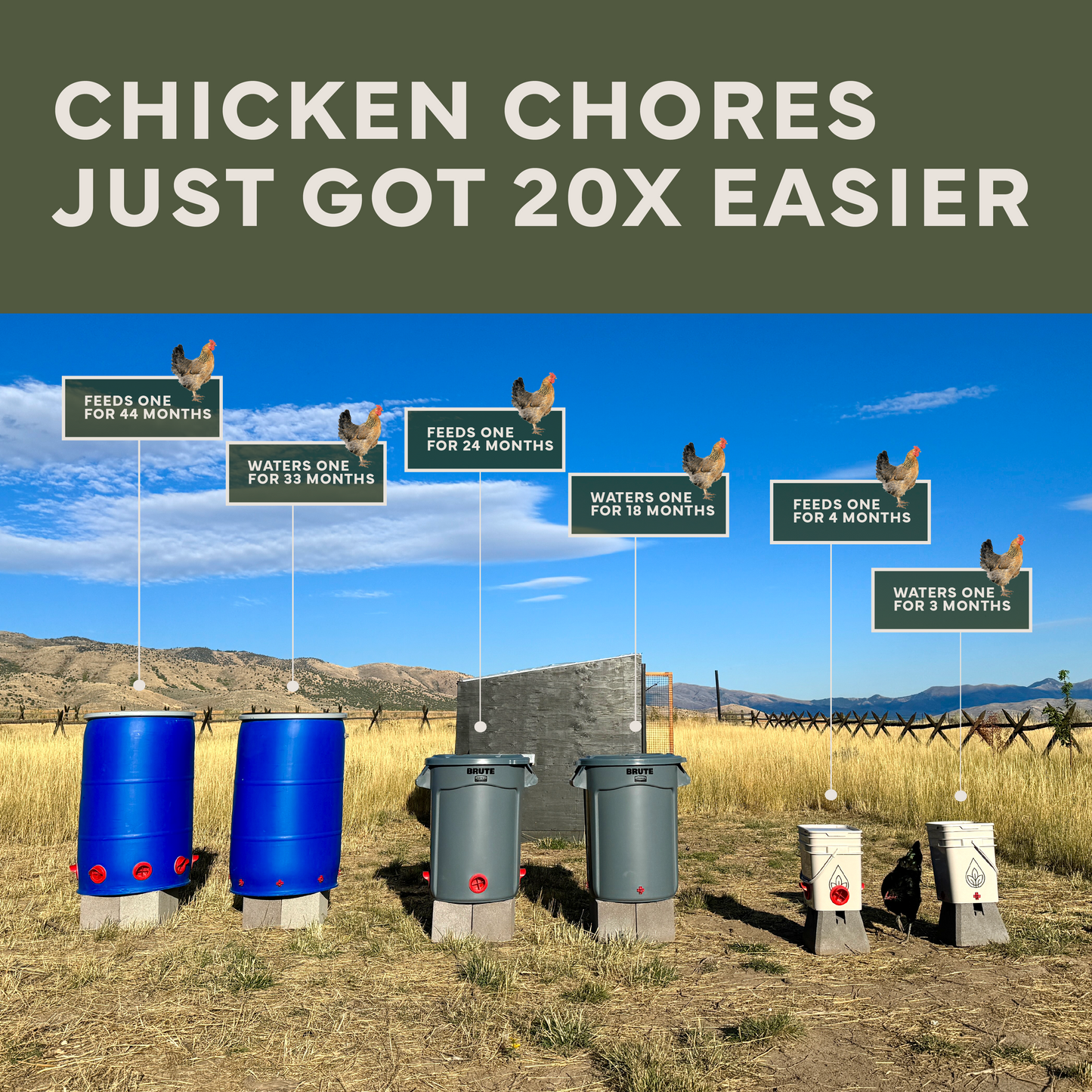





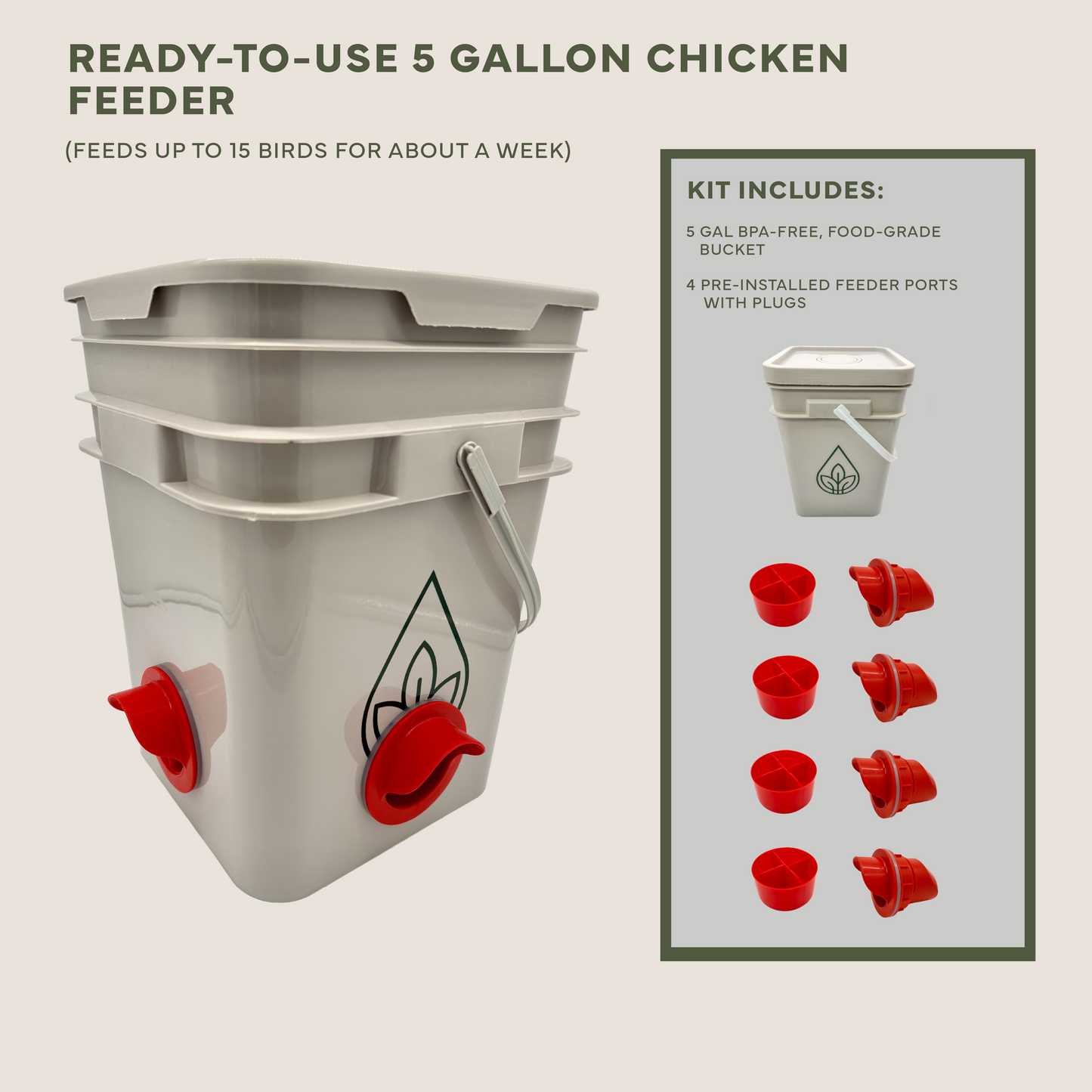
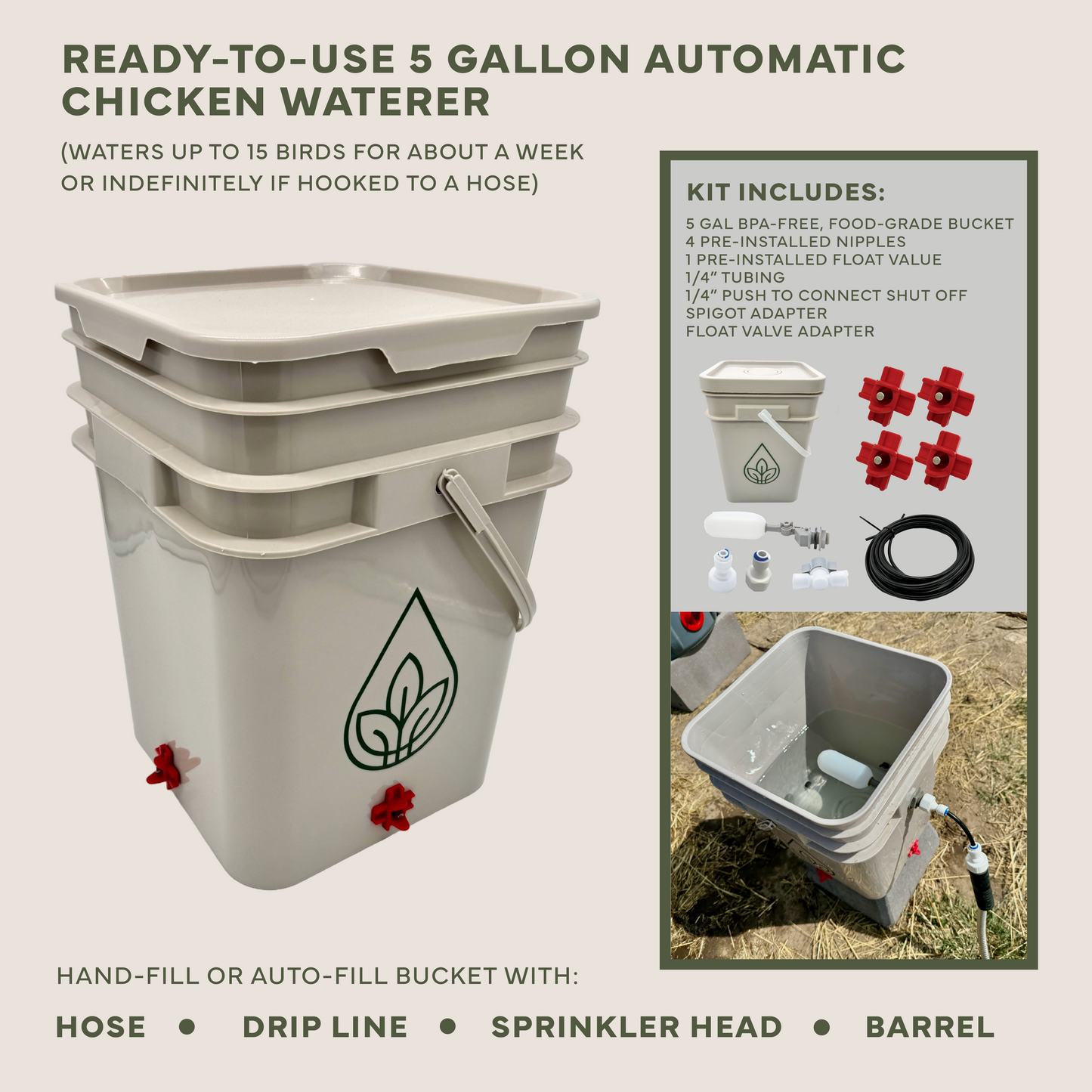
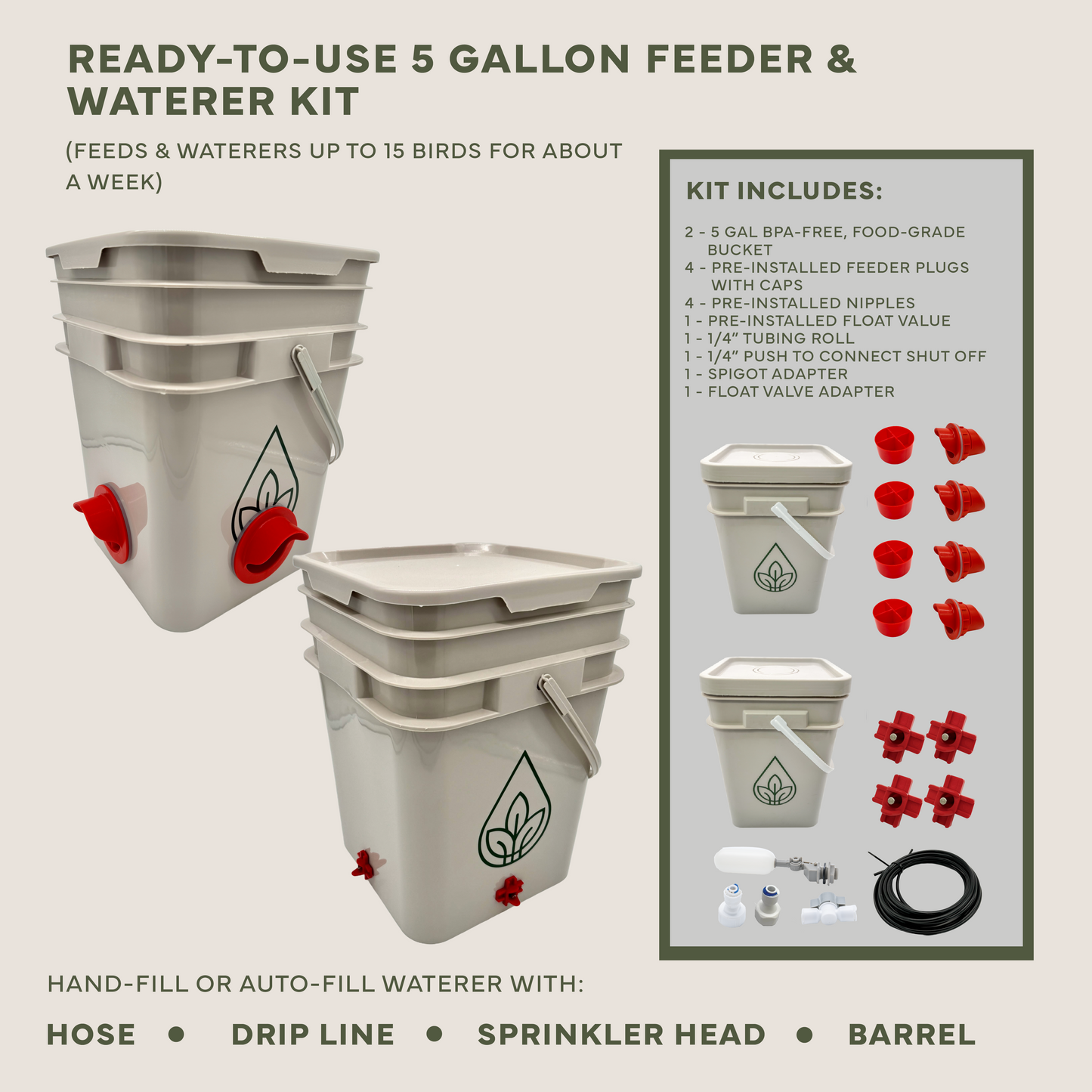
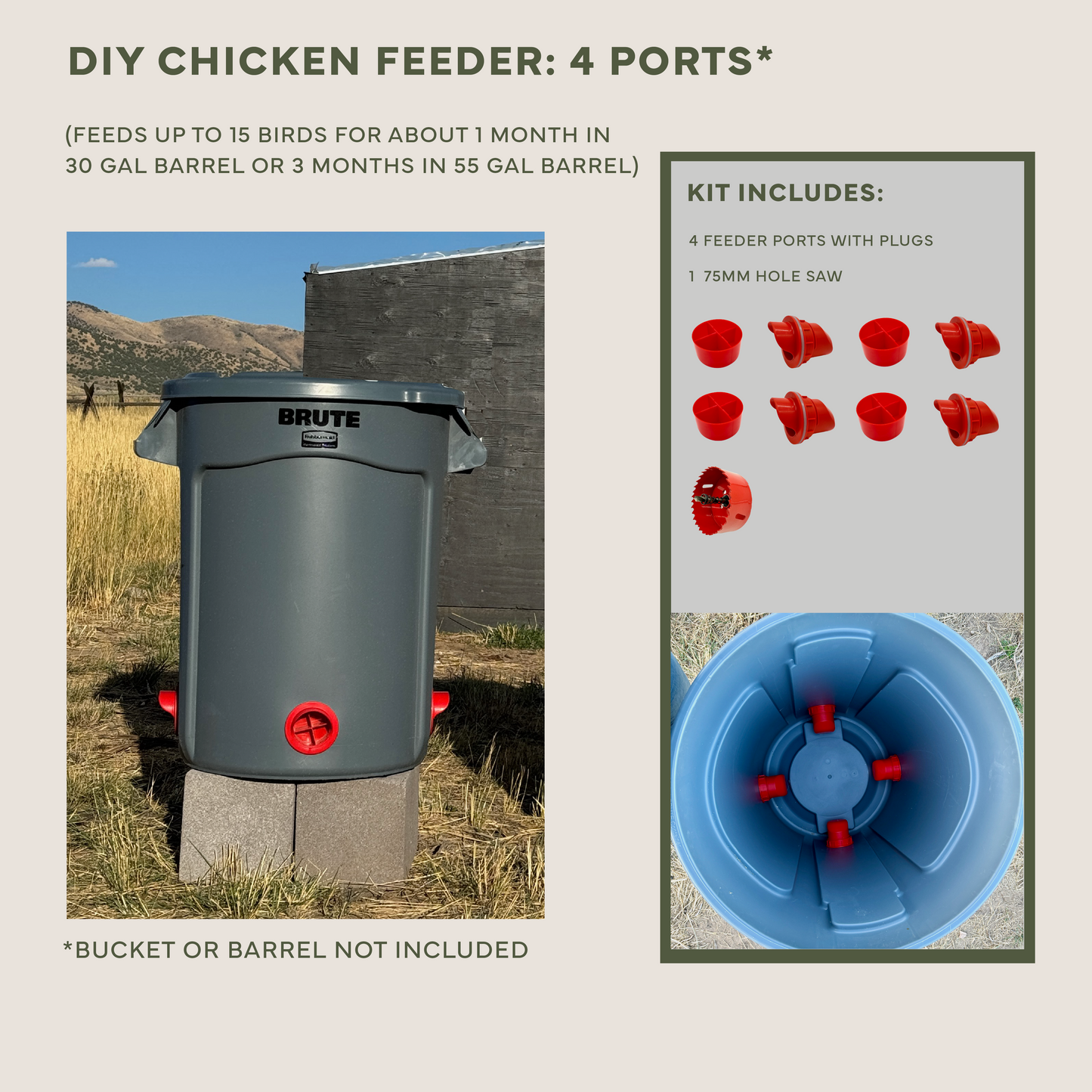
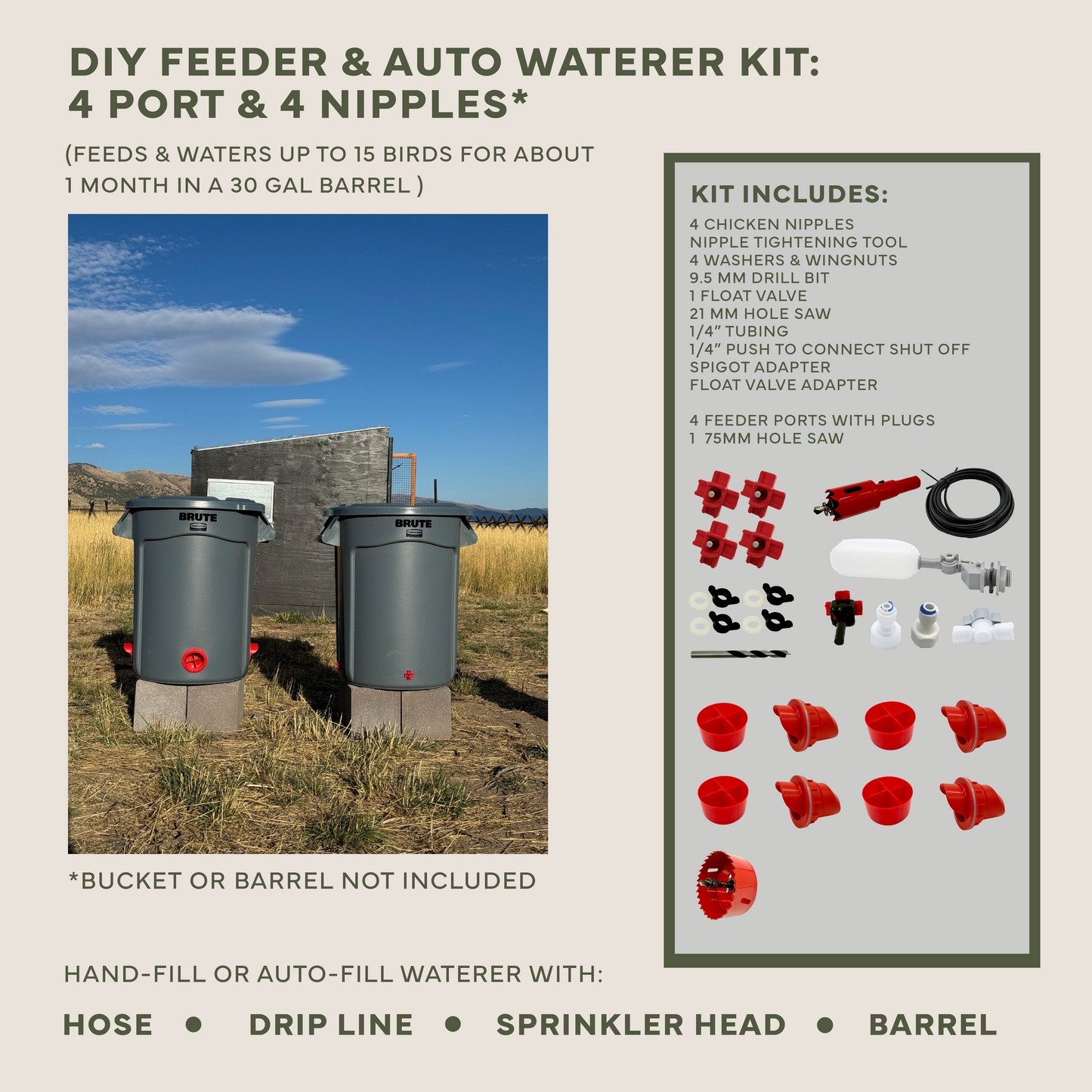
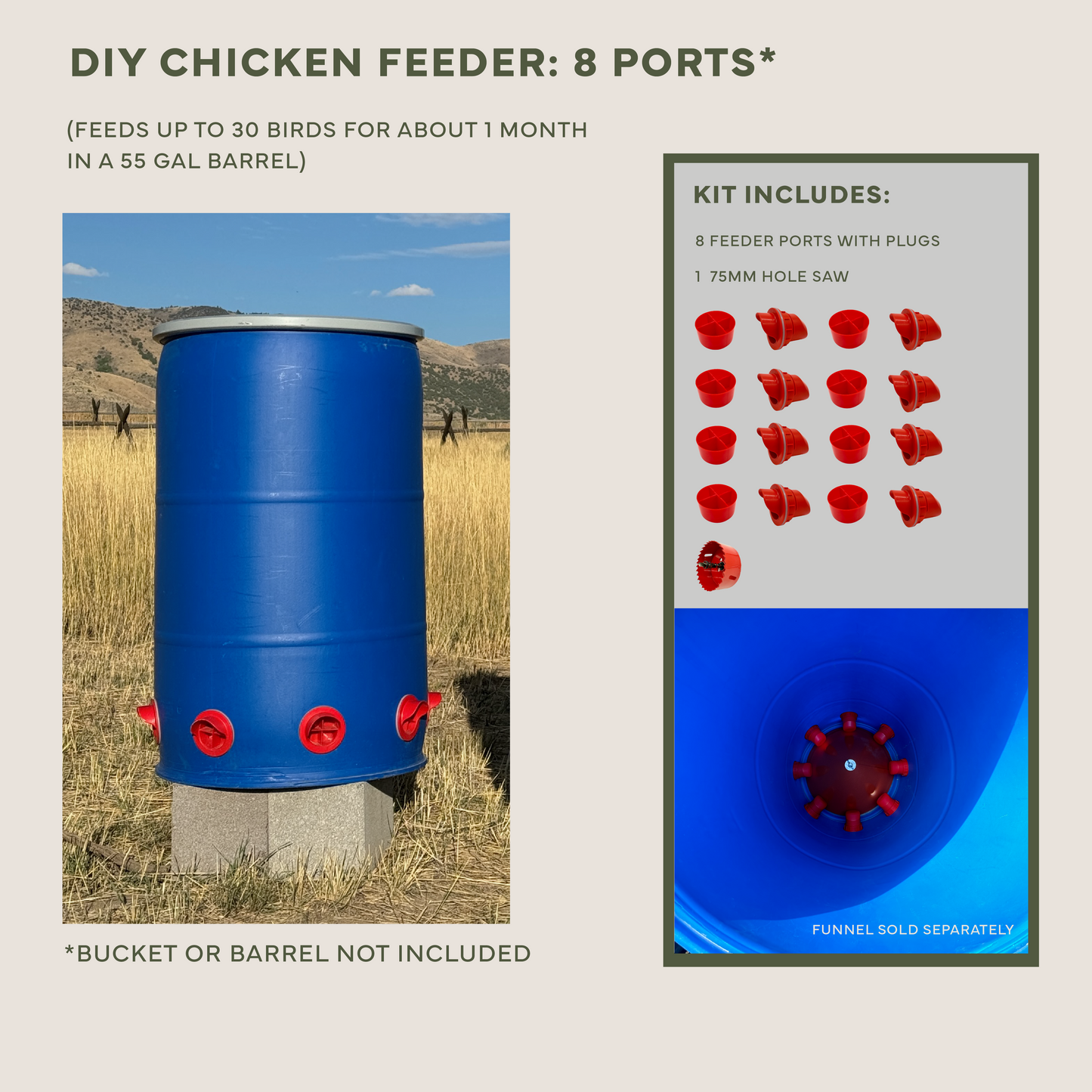
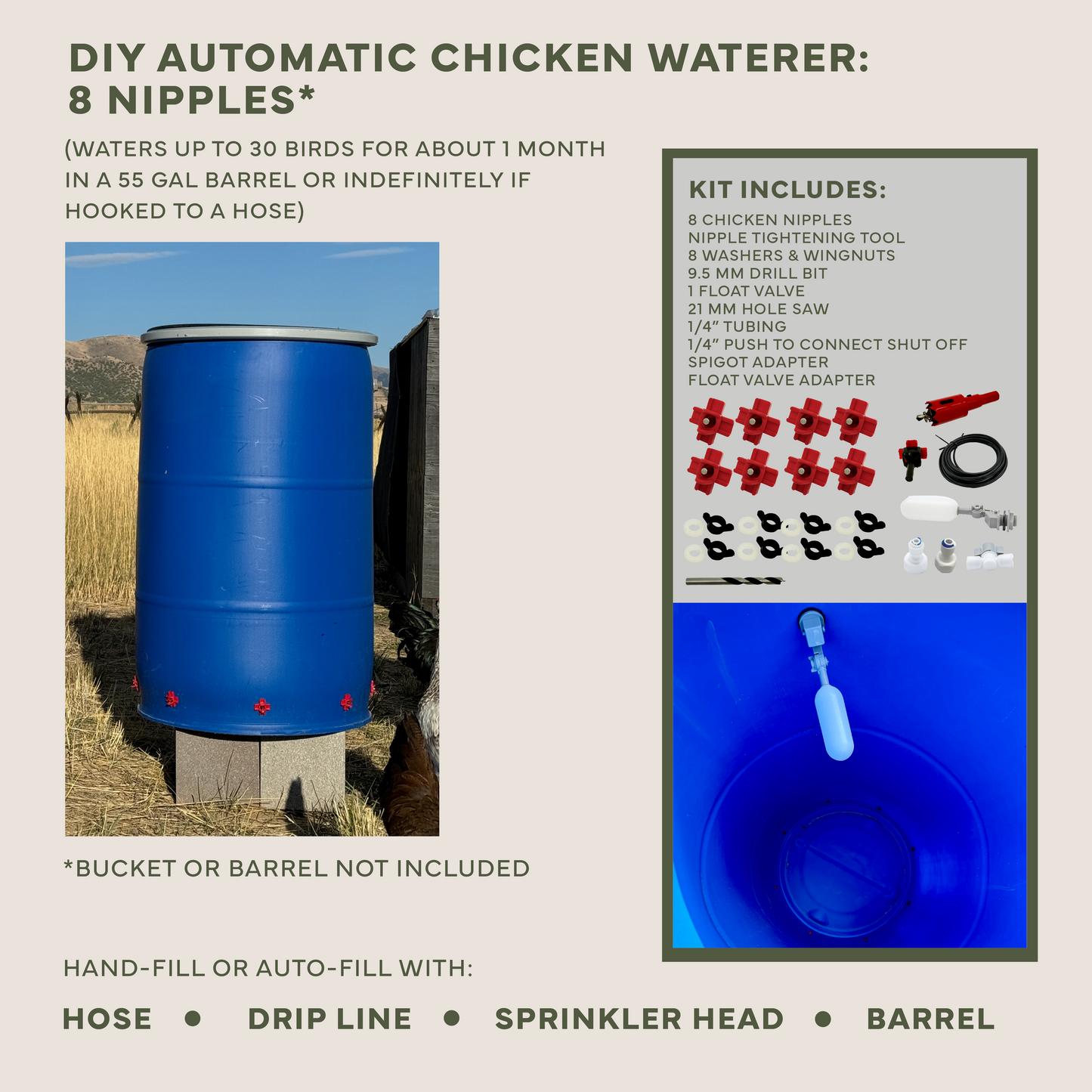
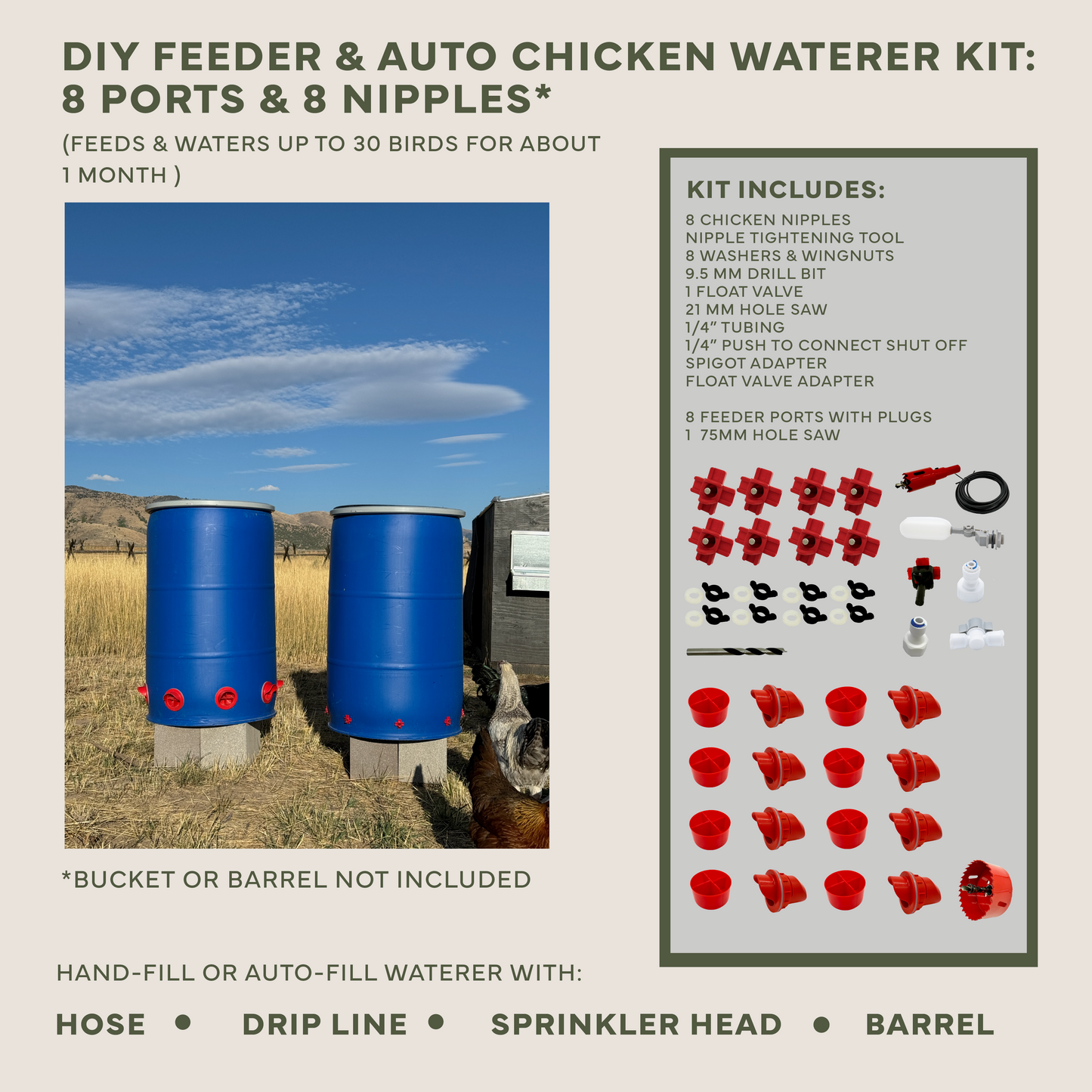
Notified by email when this product becomes available
REVIEWS
CLEARANCE SALE: GET 20% OFF + FREE SHIPPING (save $25+) ON ALL DIY CHICKEN FEEDERS & WATERERS
APPLIED AUTOMATICALLY AT CHECKOUT | EXPIRES SOON | SHIPS WITHIN 72 HOUR
QUESTIONS & ANSWERS
Q. What kind of barrel or bucket should I get with the DIY kits?
A. You can get anything from a 5 gallon bucket upwards. We find 5 gallons, 30 gallon trash cans from Home Depot or similar, and 55 gallon blue barrels best in our experience. As long as you have an open top, it should work.
Q. How do I prevent algae growth in my waterer?
A. We recommend choosing opaque containers, so as not to grow algae. 1 tbsp of apple cider vinegar per gallon of water in the feeder each time you fill it up helps to control algae. So if you have a 5 gallon, 5 tbsp per week would do the trick.
Q. How do I get my chickens to drink the water?
A. Just remove other water sources and fill the small drinking trough a few times throughout the first day of use, until you see them pecking at the nipples.
Q. How do I train my chickens to use the feeders?
A. Remove other feed sources and they'll figure it out very quickly. The feed is in the open and easy for them to see.
Q. How do I keep my water defrosted in the winter?
A. Just drop in a chicken de-icer to prevent water from icing over. Here's the one we use and recommend: Chicken Water De-Icer
Q. What about food going bad at the bottom of the barrel? I live in a humid environment (WA state, HI, the South, etc)
A. We sell a feed cone add on that will funnel the feed down towards the feed ports, ensuring there is no "dead zone" where the feed stays stagnant that would be more prone to issues.
Q. How high should I put my chicken feeder and chicken waterer?
A. About beak level (we like 8” high cinder blocks)
Q. Will the chicken water get hot?
A. Depending on your container and the outside temps, you water can get hot. We recommend putting your container in shade or using shade cloth to keep the water cooler.
Q. What are the plugs in the feed ports for?
A. If you wanted to partially or fully block the feeders, you could. There'd be no need for 4 open feed ports if you only have 2 chickens, for example
Q. Should I treat the food with calcium supplements or vitamins or diatomaceous Earth to prevent pests?
A. It depends on your area. You certainly can.
Q. Will this work with a non plastic container? I.e. can I do it with glass or ceramic?
A. Our included hole saw wouldn't work for glass or ceramic.
Q. Will this prevent rodents?
A. Yes and no. If you place your container on something that can easily be climbed on by rodents, you might have some issue. If you have a rodent issue where you live, you can put your DIY feeder container on a metal stand, like a water heater stand, use a post cinder block on containers 35 gallon or smaller, or hang our 5 gallon feeder off the ground.
Q. What's the float valve for?
A. The float valve is for automatically filling the waterer. It allows you to truly set and forget, with the waterer topping itself off as needed. You can run that setup as long as temperatures are above freezing.
Q. What happens if it freezes without a trough heater?
A. Water will stop coming out until it unfreezes. The container will usually flex with the expanding ice, but freezing of the water will most likely not affect the nipples.


